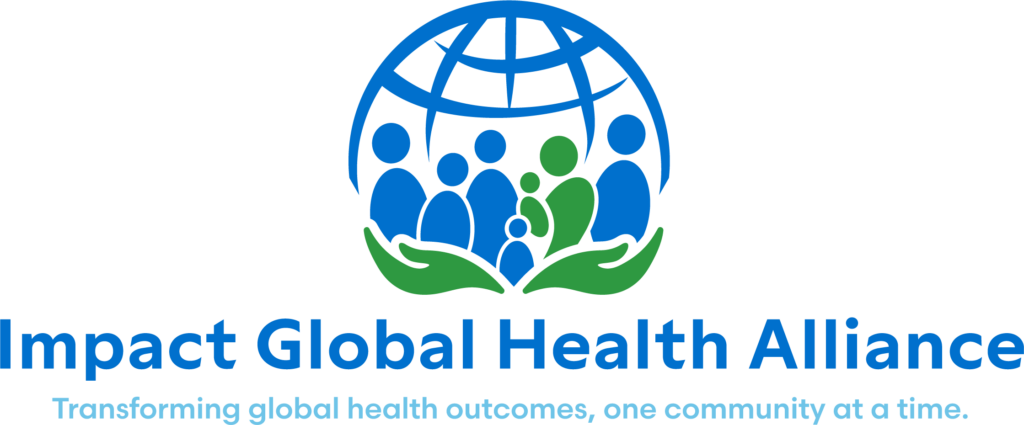By Nilpa Shah, MPH Candidate
University of California, Los Angeles | Impact Global Health Alliance Global Practicum Student
Summer 2020
Kisii County, Kenya has limited access to maternal and newborn health and emergency obstetric care. These factors contribute to a high maternal and child mortality rate – most from easily preventable and treatable diseases. To respond to these health challenges, the Kisii Konya Oroiboro Project (KIKOP) utilizes routine home visitation (RHV). RHV is a community-based public health intervention, where Community Health Volunteers (CHVs) deliver health education and support to mothers and pregnant women. These volunteers also collect vital health and pregnancy data and help oversee the health of the community.
Improving program implementation for better health outcomes
Process evaluations assess the quality of project implementation and uncover intervention strengths and weaknesses. During the evaluation we collected and analyzed program data. We also heard from CHVs on their experiences working with mothers and families. The results and insights from this study will guide us in adjusting our programming to better fit the context and meet the needs of families in the project area.

Combining data with perceptions to get the full picture
The evaluation aimed to assess program implementation and satisfaction, and answer questions like – Did we reach all of the mothers we intended with high-quality and timely services? Do CHVs feel happy and supported, and do they feel capable of completing their responsibilities? To do this, we looked at data from two catchments and used a mixed-methods study design combining data with feedback from interviews with CHVs.
Data came from various sources such as participant registers and quality improvement and verification checklists (QIVCs). To complement the quantitative data analysis and better understand CHV caseload and satisfaction, we conducted semi-structured focus group interviews with CHVs and asked them about implementation barriers and facilitators, as well as their satisfaction with the training and support they receive.
Key findings:
Mothers received nearly all of the services planned: CHVs completed an impressive 79% of the intended home visits in one catchment and 88% in the other. This report exceeded our expectations. It is common for program rollout to lag during initial implementation as new systems, staff, and volunteers are put in place and community trust grows.
Practice makes perfect: CHVs had a quality checklist performance score of 84% in the catchment where we had been working for 12 months, and 67% in a newer project area. These results are encouraging because it implies that CHVs can master their roles through experience and supportive supervision. CHVs also reported that they feel motivated and capable in their role and aim to complete all visits with high quality.
Respect motivates: CHVs cite that the respect they receive from their peers motivates them to learn more and to work hard to serve their community. CHVs also report that they enjoy teaching their community how to be healthy and appreciate the new relationships they have formed with their peers and mothers in the community. CHVs say that they feel satisfied when they see a positive difference in the health of the moms and children they serve.

Community Health Worker
Barriers discovered: CHVs’ feel that their ability to collect data and provide health education is hindered by domestic problems within a household, a mother’s busy schedule, and short-term migration. CHVs highlight that a lack of program awareness, disbelief in science, and strong religious views are influential in a women’s willingness to participate in the program. They also report that privacy and confidentiality concerns are some reasons mothers are not truthful about their health status. For example, pregnancy in young women is often stigmatized and so teen mothers are often reluctant to open up to the CHV. Lastly, CHVs mentioned that some mothers are uncomfortable asking health questions to a male CHV.
Programmatic adjustments and considerations
This evaluation will help adjust the structure and content of future home visits to ensure theoretical integrity, program quality, and reduce social and environmental barriers affecting implementation. Here are some of our takeaways:
CHVs report that they want to gain additional training on new and challenging topics such as HIV/AIDS, cancer, hypertension, and malaria. They highlight that practical, hands-on trainings help them learn best. Similarly, data from the interviews showed that CHVs know the importance of family participation but struggle to motivate them to attend. Thus, future trainings and support will incorporate best practices for involving the family – particularly the husband and mother-in-law – during the home visit.
To support CHVs with organizing the visits, KIKOP will develop a reliable scheduling and notification system to ensure that the visits are being conducted on time. This notification system can be in the form of electronic notifications, phone notifications by KIKOP staff, or distributing weekly/monthly lists of upcoming RHVs for each CHVs. Additionally, a new layer of confidentiality such as an informed consent should also be added to the data collection process to improve trust among participants.
Due to the positive change seen by the CHVs in their communities, they express hope for future plans to include expansion of health education to populations other than mothers and children. Moreover, to support the sustainability of the program, CHV’s strongly recommend that the Kisii government incorporate the CHVs into the health system and in order to continue this important work.
You can read the full report here. You can also help support Community Health Workers around the world by making a donation today.




